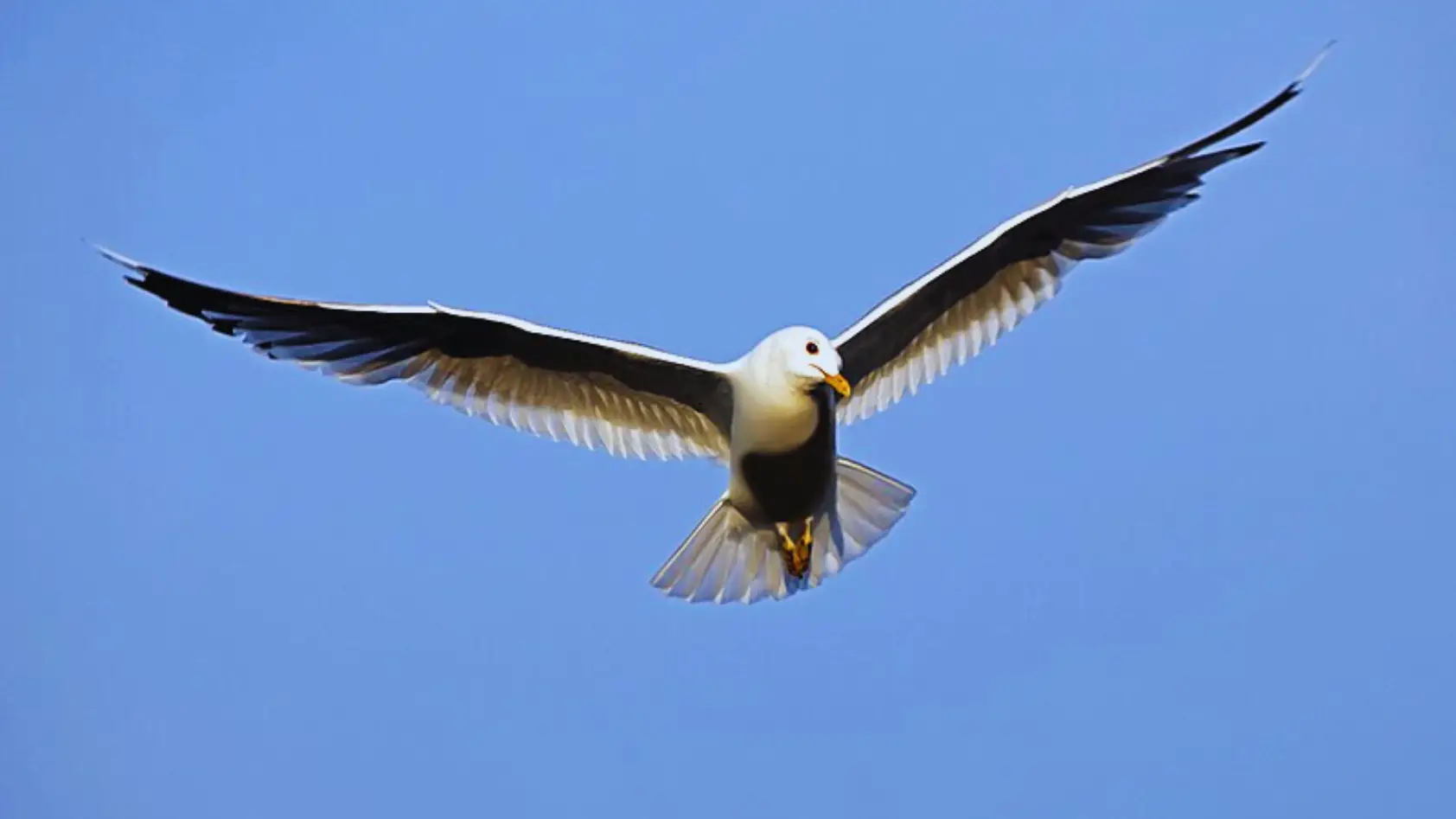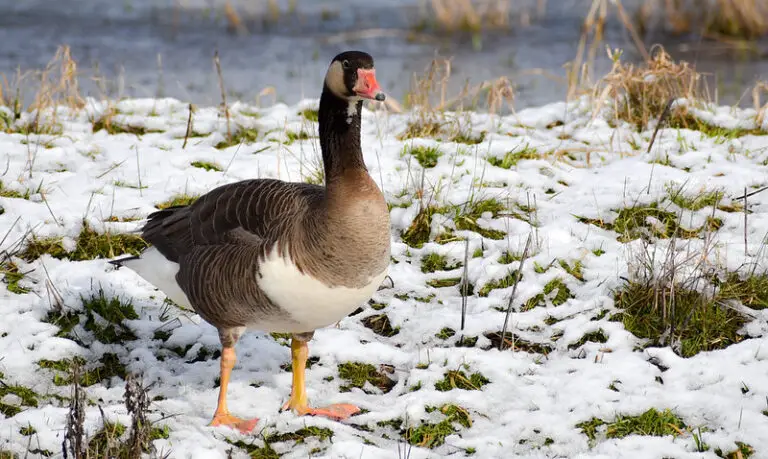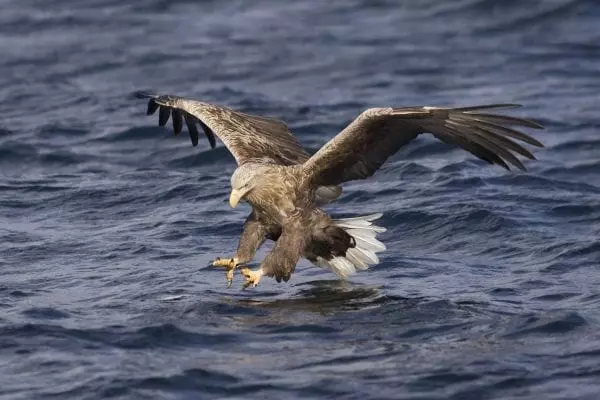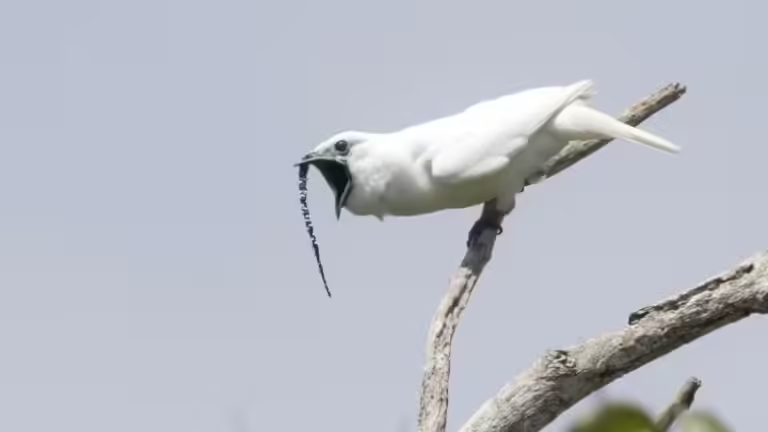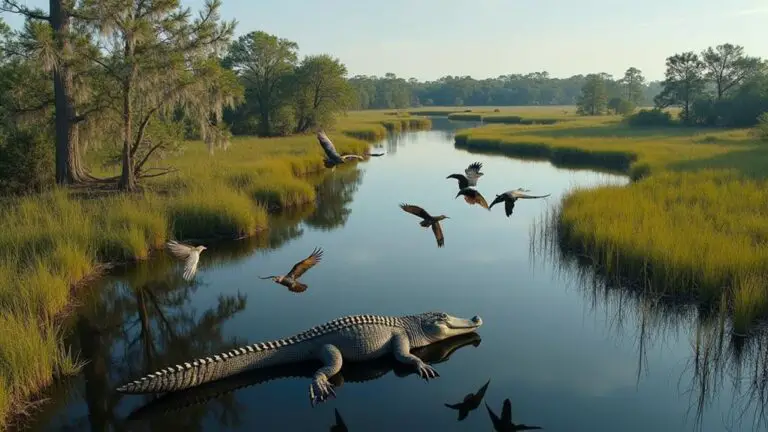Do you ever wonder how birds achieve such graceful flight, effortlessly soaring through the sky? Experience the enchantment of a bird with wings spread wide, symbolizing grace, power, and the joy of soaring through the air. Immerse yourself in the wonder of nature’s aerial wonders.
In this article, we will delve into the mechanics of bird flight, exploring the significance of different wing positions and the diversity of avian flight. We will also discuss the evolutionary adaptations that have allowed birds to take to the skies and the incredible feats of migration they undertake.
Furthermore, we will explore the vital role birds play in ecosystems and the threats they face. But don’t worry, it’s not all doom and gloom – we will also highlight the conservation efforts in place and the joy of bird watching.
So, get ready to spread your wings and embark on a journey to capture the graceful splendor of avian flight.
Key Takeaways
- Understanding avian flight mechanics is crucial for capturing the graceful splendor of bird flight.
- Different wing positions and maneuverability techniques contribute to the beauty and agility of avian flight.
- Bird photography requires specific equipment and knowledge of bird behavior to capture stunning photographs.
- Birds play a vital role in ecosystems, and conservation efforts are necessary to protect their habitats and ensure their survival.
The Mechanics of Bird Flight
Flying like a bird is an exhilarating experience, and understanding the mechanics of their flight allows us to appreciate the true beauty and grace behind their soaring wings.
When a bird takes flight, several factors come into play. First, their wings are designed in a way that allows for efficient lift and propulsion. The shape of their wings, with a curved upper surface and a flatter lower surface, creates a pressure difference that generates lift as air passes over them. Additionally, birds have strong chest muscles that power their wings, allowing them to flap rapidly and generate the necessary lift to stay airborne.
Birds also have a unique skeletal structure that aids in their flight. Their lightweight bones are hollow, which reduces their overall weight and makes it easier for them to take off and stay in the air. Their bones are also fused in certain areas, providing stability and strength during flight maneuvers. Furthermore, birds have a highly efficient respiratory system that enables them to take in large amounts of oxygen during flight. This ensures that their muscles receive enough oxygen to sustain the energy required for continuous wing movement.
In conclusion, the mechanics of bird flight are a testament to the wonders of nature. From the shape of their wings to their lightweight skeletal structure, every aspect of their design is optimized for flight. Understanding these mechanics allows us to truly appreciate the grace and splendor of avian flight.
The Significance of Wing Positions
Gliding effortlessly through the air, you can appreciate the beauty of the various angles at which a bird positions its wings. The significance of wing positions cannot be understated, as they play a crucial role in a bird’s ability to maneuver and maintain flight. Whether it is soaring high above or diving towards its prey, a bird’s wings are constantly adjusting to optimize its performance.
In order to understand the significance of wing positions, let’s take a closer look at a table that showcases the different positions and their functions:
| Wing Position | Description |
|---|---|
| Extended Wings | This position is used for soaring and gliding, allowing a bird to cover long distances with minimal effort. The wings are fully extended, creating a broad surface area to catch the wind. |
| Tucked Wings | When a bird needs to increase its speed or change direction quickly, it tucks its wings tightly against its body. This reduces drag and allows for agile maneuvering. |
| Half-Spread Wings | This position is commonly seen during takeoff or landing. It provides a balance between lift and maneuverability, allowing a bird to make precise adjustments while maintaining stability. |
| Upturned Wings | Birds use this position to create lift during steep climbs or when hovering in mid-air. The upturned wings generate a strong upward force that counteracts the pull of gravity. |
| Folded Wings | When a bird is resting or perched, it folds its wings neatly against its body. This minimizes wind resistance and conserves energy. |
Understanding the significance of these wing positions gives us a glimpse into the complex and intricate world of avian flight. It is a testament to the remarkable adaptability and efficiency of birds, enabling them to navigate the skies with grace and splendor.
The Diversity of Avian Flight
Soaring effortlessly through the sky, birds display a breathtaking array of aerial maneuvers that showcase their remarkable adaptability and agility. From the graceful soaring of an eagle to the rapid, darting flight of a hummingbird, the diversity of avian flight is truly awe-inspiring.
Each bird species has evolved its own unique flight style, allowing them to navigate different environments and fulfill specific ecological niches. Whether it’s the long, gliding flights of seabirds as they search for fish or the acrobatic twists and turns of a swallow as it catches insects mid-air, avian flight is a testament to the incredible diversity and versatility of nature.
One of the most striking examples of avian flight diversity can be seen in the different wing shapes and sizes. Some birds, like the albatross, have long, narrow wings that allow them to soar for hours without flapping. Others, such as the hummingbird, have short, broad wings that enable them to hover in mid-air, their wings beating at an astonishing rate.
The diversity of avian flight is not only visually stunning but also serves as a reminder of the remarkable adaptations that birds have developed over millions of years. It is a testament to their ability to conquer the skies and adapt to a wide range of ecological conditions.
So next time you see a bird in flight, take a moment to appreciate the beauty and diversity of their aerial maneuvers.
Evolutionary Adaptations for Flight
Birds have developed a repertoire of evolutionary adaptations for flight. One key adaptation is the development of lightweight, yet strong, hollow bones. These bones reduce the bird’s overall weight and provide the necessary strength for flight.
Birds also have highly efficient respiratory systems. Their lungs are designed to extract oxygen from the air more effectively, meeting the high energy demands of flying.
In addition, birds have evolved powerful flight muscles that are attached to their breastbones. These muscles enable them to flap their wings with great force and generate the necessary lift to stay airborne.
Feathers are another crucial adaptation for flight. They provide insulation and protection, while also allowing birds to control their direction, speed, and stability while in flight.
Combined, these evolutionary adaptations have allowed birds to master the art of flight and navigate the skies with grace and precision.
Bird Migration and Long-Distance Flight

When it comes to bird migration and long-distance flight, there are three key points to consider.
First, you’ll explore how birds navigate and orient themselves during their journeys.
Second, you’ll learn about the strategies they employ to conserve energy and maximize fuel efficiency.
Finally, you’ll delve into the challenges and risks that birds face while undertaking these remarkable migrations.
Navigation and Orientation
Birds have a remarkable ability to navigate their surroundings, gliding effortlessly through the air with an innate sense of direction and purpose. During migration, they can find their way across vast distances using a combination of cues. These cues include the position of the sun, the Earth’s magnetic field, and familiar landmarks. Birds possess an internal compass that allows them to maintain a steady course, ensuring they reach their destination. The exact mechanisms behind this navigation ability are not fully understood, but scientists believe it may be a combination of genetic and learned behaviors. By studying the behaviors and patterns of birds, researchers hope to unravel the secrets of avian navigation and gain a deeper understanding of these incredible creatures.
Energy Conservation and Fuel Efficiency
Effortlessly soaring through the air, birds are able to conserve energy and maximize fuel efficiency. Their remarkable ability to accomplish this is due to a combination of factors:
- Streamlined body shape: Birds have evolved aerodynamic bodies that reduce drag and enable them to glide smoothly through the air, minimizing the energy required to maintain flight.
- Efficient wing design: Birds’ wings are specifically adapted for flight, with strong and flexible feathers that allow for precise control of their movements. This efficient wing design enables birds to generate lift with minimal effort.
- Soaring techniques: Many bird species take advantage of rising air currents, such as thermals and updrafts, to gain altitude and maintain flight without expending much energy. By skillfully utilizing these natural air movements, birds can conserve their limited energy resources.
By incorporating these strategies, birds are able to navigate vast distances and migrate long distances, all while conserving energy and maximizing fuel efficiency.
Challenges and Risks of Migration
As you embark on your migratory journey, you face numerous challenges and risks that test your resilience and courage. Migration is a perilous undertaking, fraught with dangers at every turn.
One of the biggest challenges you face is finding enough food and water along your route. The long distances you have to cover require a constant and reliable source of nourishment, and any scarcity can lead to exhaustion and even death.
Additionally, you must navigate through unfamiliar territories, avoiding predators and hazardous weather conditions. Storms and strong winds can throw you off course, making it even more difficult to reach your destination.
Despite these challenges, your innate instincts drive you to press on, as you strive to find a safe haven and ensure the survival of your species.
Bird Photography Tips and Techniques
If you want to capture stunning shots of birds, there are a few key points you should keep in mind.
First, choosing the right equipment is essential. Make sure you have a camera with a good telephoto lens to get up close and personal with your subjects.
Second, understanding bird behavior and habits will help you anticipate their movements and capture those perfect moments.
Finally, pay attention to composition and lighting to create visually striking images.
Choosing the Right Equipment
When selecting the proper equipment, it’s crucial to consider factors such as wing span and body size in order to capture the full magnificence of birds in flight. To ensure you have the right gear for the job, keep the following in mind:
- Lens choice: A telephoto lens with a long focal length will enable you to get detailed shots of birds in flight, bringing you closer to the action.
- Camera body: Look for a camera with a fast burst mode and good autofocus capabilities. This will help you capture those split-second moments when birds are in mid-flight.
- Stability: Using a tripod or monopod can provide stability and reduce camera shake, resulting in sharper images of birds in motion.
With the right equipment in hand, you’ll be well-prepared to capture the graceful splendor of avian flight.
Understanding Bird Behavior and Habits
Studying bird behavior and habits can provide valuable insight into their aerial maneuvers. Birds have adapted to different environments, and understanding their behavior helps us capture the perfect shot of them in flight. Observing their flight patterns, such as soaring, gliding, or flapping, guides us in positioning ourselves for the best angle.
Bird species have unique feeding and nesting habits that can predict their movements. Knowing where they gather or rest increases our chances of capturing striking images. Paying attention to their body language, such as head movements or wing positions, indicates when they are about to take off or change direction.
With this knowledge, we can anticipate their movements and be ready to capture their graceful splendor in the sky.
Composition and Lighting for Stunning Shots
To truly capture the essence of a bird in motion, position yourself strategically and wait for the perfect moment to click the shutter, allowing the interplay of light and composition to create an enchanting visual symphony.
- Find the right angle: Experiment with different perspectives to showcase the bird’s wings and movement. Get low or go high to add depth and drama to your shots.
- Utilize natural light: Take advantage of the golden hours of sunrise and sunset for warm, soft lighting that enhances the bird’s beauty. Avoid harsh midday sunlight that can wash out colors and create harsh shadows.
- Frame the shot: Use the rule of thirds to create a balanced composition. Place the bird off-center to add visual interest and allow room for the bird to fly into the frame.
- Capture the details: Zoom in to capture the intricate patterns of feathers and the intense focus in the bird’s eyes. Pay attention to the bird’s body language to capture its personality and emotion.
Bird Flight in Art and Literature
In this section, you’ll explore the captivating world of bird flight in art and literature. Discover the symbolism and metaphors associated with birds in various artistic expressions.
Immerse yourself in the depictions of birds in ancient and modern art. Uncover the inspiration they have provided for poets and writers throughout history.
Symbolism and Metaphors
The symbolism and metaphors woven into the image of a bird with wings spread convey a profound sense of freedom and transcendence. As you gaze upon the bird in flight, you can’t help but feel a surge of awe and wonder.
The outstretched wings represent liberation from the constraints of earthly existence, as if the bird is soaring towards the heavens. It is a metaphor for the human spirit, yearning to break free from the limitations of the physical world and reach for something greater.
The bird’s graceful movements and effortless glide through the air become a symbol of the soul’s journey towards enlightenment and spiritual awakening. In this image, you can find solace and inspiration, a reminder that even in the face of adversity, there is always the possibility of transcendence.
Depictions in Ancient and Modern Art
The ancient and modern depictions of this majestic creature evoke a sense of awe and wonder. In ancient art, such as Egyptian hieroglyphics and Mesopotamian carvings, birds with wings spread symbolized power, freedom, and the divine. These artworks portrayed birds in flight, capturing their grace and elegance.
Fast forward to modern times, and we see the same fascination with depicting birds with wings spread. Artists have used various mediums, such as painting, sculpture, and photography, to capture the beauty of avian flight. From the delicate brushstrokes of Monet’s ‘Water Lilies and Japanese Bridge’ to the dynamic movement captured in Robert Bateman’s wildlife photography, these depictions showcase the bird’s ability to soar through the sky with unparalleled grace.
Through ancient and modern art, the bird with wings spread continues to captivate and inspire us.
Inspirations for Poets and Writers
Entranced by the ethereal dance of feathers, poets and writers find solace in the soaring melodies and untamed spirit of these majestic creatures.
As you observe a bird with wings spread, a flood of inspiration rushes through you. It’s as if the bird’s flight carries you to another realm, a place where words flow effortlessly from your pen.
You watch in awe as the bird effortlessly glides through the sky, its wings a symphony of motion. In that moment, you understand the freedom and grace that comes with surrendering to the unknown.
The bird becomes a symbol of hope, reminding you that even in the darkest of times, there is beauty and possibility. With every stroke of your pen, you attempt to capture the essence of this magnificent creature, allowing its spirit to guide your words.
The Role of Birds in Ecosystems
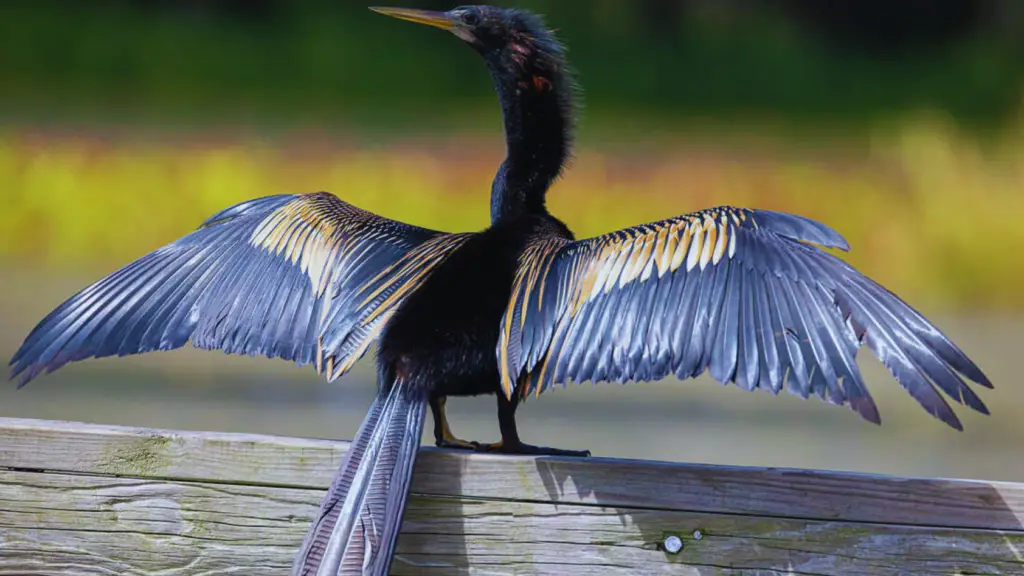
Birds, like tiny architects, build homes for countless other creatures in the intricate web of ecosystems. They play a crucial role in maintaining the balance and health of these ecosystems. Here are four important ways in which birds contribute:
- Seed dispersal: Birds are expert seed dispersers. They consume fruits and berries, and their droppings help spread these seeds to new locations. This process allows for the colonization of new areas by plants and helps maintain biodiversity.
- Pollination: Many bird species, such as hummingbirds and sunbirds, are important pollinators. As they feed on nectar, they inadvertently transfer pollen from one flower to another, aiding in the reproduction of plants. Without birds, many plant species would struggle to reproduce.
- Pest control: Birds are natural pest controllers. They feed on insects, rodents, and other small animals that can become a nuisance or cause damage to crops. By preying on these pests, birds help keep their populations in check and reduce the need for chemical pesticides.
- Nutrient cycling: Birds contribute to nutrient cycling by consuming fruits, seeds, and carrion. As they digest these items, they release nutrients back into the environment through their droppings. This helps enrich the soil and promote the growth of plants.
Birds are not just beautiful creatures; they are essential players in the delicate balance of ecosystems. Their presence and activities have far-reaching effects that benefit countless other organisms.
Threats to Avian Flight
Habitat loss and fragmentation pose a significant threat to avian flight. As humans continue to develop and expand urban areas, the natural habitats of birds are being destroyed, leaving them with less space to fly and search for food.
Climate change is also disrupting avian flight patterns, as rising temperatures and unpredictable weather conditions alter the availability of food and nesting sites.
Additionally, pollution and the accumulation of contaminants in the environment can negatively impact the health and ability of birds to fly, further endangering their survival.
Habitat Loss and Fragmentation
Unfortunately, as humans continue to encroach on natural habitats, many bird species are facing the devastating effects of habitat loss and fragmentation. Studies have shown that over 80% of the world’s forests have been altered or destroyed due to human activities. This destruction directly impacts bird populations, as they rely on specific habitats for nesting, feeding, and migration.
Here are three key consequences of habitat loss and fragmentation:
- Decreased nesting sites: As forests are cleared for agriculture or urban development, birds lose their natural nesting sites. This can lead to a decline in breeding success and population growth.
- Limited food availability: Fragmentation of habitats also restricts the availability of food sources for birds. They may struggle to find sufficient prey or plant resources, affecting their overall health and survival.
- Disrupted migration patterns: Many bird species undertake long-distance migrations, relying on intact habitats along their route. When these habitats are fragmented, birds face obstacles such as highways or urban areas, which can disrupt their journey and lead to population declines.
It is crucial that we take steps to protect and restore habitats to ensure the survival of bird species and maintain the beauty of avian flight.
Climate Change and Disruption of Migration Patterns
Now that we’ve explored the detrimental effects of habitat loss and fragmentation on bird populations, let’s turn our attention to another significant threat: climate change.
This global phenomenon is causing a disruption in the migration patterns of many bird species, further impacting their survival. As temperatures rise and weather patterns become more unpredictable, birds are facing challenges in locating their traditional feeding and breeding grounds.
The timing of migration is also being affected, as shifts in climate alter the availability of food sources along the birds’ migration routes. This can result in decreased reproductive success and overall population decline.
It is crucial that we understand the impact of climate change on bird migration and take necessary measures to mitigate its effects. By doing so, we can ensure the continued grace and beauty of our avian friends in flight.
Pollution and Contaminant Accumulation
Pollution from various sources, such as industrial waste and agricultural runoff, poses a significant threat to the survival of many bird species. They are particularly vulnerable to the accumulation of contaminants in their bodies. Here are four reasons why pollution and contaminant accumulation have a detrimental impact on avian populations:
- Weakened Immune Systems: Birds exposed to high levels of pollutants have weakened immune systems. This makes them more susceptible to diseases and infections.
- Reproductive Issues: Contaminants can disrupt the reproductive systems of birds. This leads to reduced fertility rates and hatching abnormalities.
- Altered Behavior: Pollution can affect the behavior of birds. It causes disorientation and impaired foraging abilities.
- Population Decline: Ultimately, the accumulation of contaminants can lead to population decline. Birds may struggle to survive, reproduce, or migrate effectively.
To protect these magnificent creatures and preserve their graceful splendor, it is crucial to address pollution and reduce the release of harmful contaminants into the environment.
Conservation Efforts and Bird Sanctuaries
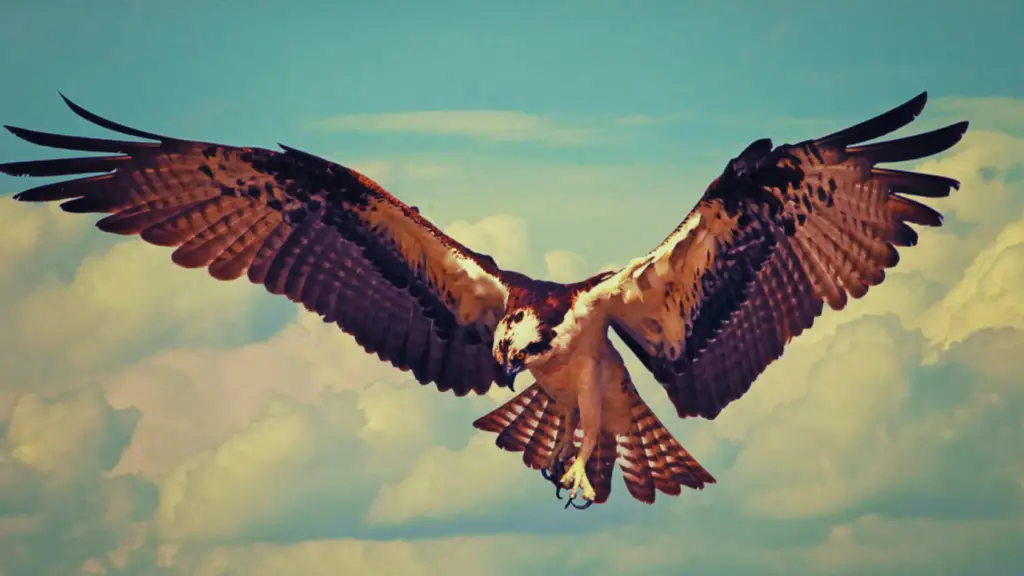
Imagine yourself standing in the heart of a vibrant bird sanctuary, surrounded by the harmonious melodies of countless feathered creatures, their colorful plumage fluttering in the gentle breeze, a testament to the tireless efforts of conservationists. As you observe these majestic birds, you can’t help but feel a deep sense of gratitude for the existence of these sanctuaries and the dedicated individuals who work tirelessly to protect them.
Conservation efforts play a crucial role in preserving these avian habitats and ensuring the survival of numerous bird species. Bird sanctuaries serve as safe havens, providing birds with a protected environment where they can nest, feed, and thrive. Through active management practices, such as habitat restoration and predator control, these sanctuaries create ideal conditions for birds to flourish.
To further understand the impact of these conservation efforts, let’s take a closer look at a few notable bird sanctuaries:
| Sanctuary Name | Location | Key Features |
|---|---|---|
| Plumage Paradise | Coastal Area | Rich diversity of migratory bird species |
| Winged Haven | Mountain Range | Breeding ground for endangered raptors |
| Feathered Oasis | Wetlands | Critical stopover site for migrating birds |
| Avian Retreat | Forest | Home to rare and endemic bird species |
These sanctuaries not only provide a sanctuary for birds but also offer opportunities for bird enthusiasts and researchers to study and appreciate these magnificent creatures. By supporting and promoting these conservation efforts, we can ensure the continued existence of these bird sanctuaries and the awe-inspiring beauty of avian flight.
The Joy of Bird Watching
If you’re passionate about bird watching, you’ll be thrilled to explore the discussion on the joy of this activity.
Discovering the best birding locations will take you to breathtaking settings where you can observe a wide variety of species.
By learning to identify bird species and their unique calls, you’ll enhance your birding experience and become an expert in no time.
Additionally, joining birding communities and organizations will connect you with like-minded individuals who share your love for birds and provide opportunities for group outings and educational events.
Finding the Best Birding Locations
To fully experience the beauty of avian flight, you should seek out the most exceptional birding locations. These places offer a perfect blend of diverse bird species and breathtaking landscapes.
One such location is the Everglades National Park in Florida. Here, you can witness the graceful flight of herons, egrets, and ibises against the backdrop of lush wetlands and mangroves.
Another incredible spot is the Galapagos Islands, where you can marvel at the unique flight patterns of the blue-footed booby and the waved albatross.
For a different experience, head to the Serengeti National Park in Tanzania. Here, you can witness the mesmerizing flight of eagles and vultures as they soar above the vast savannah.
These exceptional birding locations will surely leave you in awe of the splendor of avian flight.
Identifying Bird Species and Calls
Take a moment to appreciate the wonder of identifying different bird species and their unique calls, allowing you to truly immerse yourself in the beauty of the natural world. It’s a thrilling experience to spot a bird and be able to name it instantly, recognizing its distinctive features and understanding its behavior. By learning to identify bird species, you open yourself up to a whole new level of observation and appreciation. Not only can you admire the physical attributes of each bird, but you can also listen to their melodic calls, each one a symphony of nature’s music. To help you in your bird identification journey, here’s a handy table showcasing some common bird species and their unique calls:
| Bird Species | Unique Call |
|---|---|
| American Robin | Cheerily, cheer up |
| Mourning Dove | Coo, ooh |
| Northern Cardinal | Cheer, cheer, cheer |
With these calls in mind, you’ll be able to identify birds by both sight and sound, enhancing your birdwatching experience.
Joining Birding Communities and Organizations
Immerse yourself in a vibrant community of nature enthusiasts by joining birding organizations. Here, you can share your passion, learn from experienced birdwatchers, and embark on exciting expeditions to explore the wonders of the avian world.
Being part of a birding community offers numerous benefits, including:
- Networking opportunities: Connect with like-minded individuals who share your love for birds and exchange valuable insights and information.
- Education and learning: Gain knowledge from seasoned birdwatchers who can teach you about bird identification, behavior, and conservation efforts.
- Group outings and expeditions: Join organized birding trips to different locations, where you can observe a variety of bird species and learn about their habitats.
By joining birding communities and organizations, you can enhance your birdwatching experience and contribute to the preservation of these magnificent creatures.
Bird With Wings Spread: FAQs
How many different species of birds are there in the world?
There are over 10,000 different species of birds in the world. They come in various shapes, sizes, and colors, each with its own unique characteristics and adaptations for survival in different environments.
What are the main threats to bird populations?
You might think that birds have it all, soaring through the skies with their majestic wings. But in reality, the main threats to bird populations include habitat loss, pollution, climate change, and predation.
What is the average lifespan of a bird?
The average lifespan of a bird varies greatly depending on the species, ranging from a few years to several decades. Factors such as habitat, predation, and human activities can also influence their lifespan.
How do birds navigate during long-distance migrations?
Birds navigate during long-distance migrations using a combination of celestial cues, landmarks, and magnetic fields. They visualize the stars guiding their path, recognize familiar landmarks, and feel the Earth’s magnetic pull like an invisible compass.
Can birds fly backwards?
Yes, birds can fly backwards. They have special flight muscles and wing adaptations that allow them to maneuver in any direction. This ability helps them navigate through tight spaces and catch prey.
Conclusion
So there you have it, bird lover. You’ve soared through the captivating world of avian flight, witnessing the mechanics, diversity, and adaptations that make it all possible.
From the graceful spread of wings to the epic journeys of migration, birds truly embody the wonders of nature.
Remember, ‘The early bird catches the worm,’ so grab your binoculars and immerse yourself in the joy of bird watching.
And as you do, cherish these magnificent creatures and support conservation efforts to keep their flight forever free.

